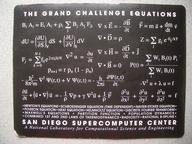Quiz Answer Key and Fun Facts
1. What type of friction is air resistance?
2. What two factors affect air resistance?
3. In what direction does air resistance act on an object that is falling straight down?
4. For an object that is falling in the air (for example, a skydiver), before the object reaches terminal velocity, which force is larger, gravity or air resistance?
5. What happens to the drag (air resistance) of an object as the speed increases?
6. What does it mean when an object is in free fall in a vacuum?
7. Scientifically speaking, what is a vacuum?
8. What is the term when an object stops accelerating due to air resistance?
9. Even if they weren't strapped in, why wouldn't astronauts hit their heads on the ceiling of the shuttle as it falls?
10. At what rate do all objects accelerate to Earth (assuming no air resistance)?
Source: Author
dudealicious
This quiz was reviewed by FunTrivia editor
crisw before going online.
Any errors found in FunTrivia content are routinely corrected through our feedback system.


